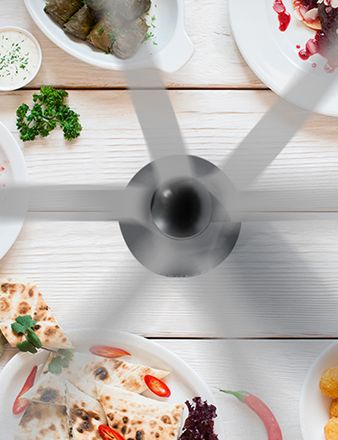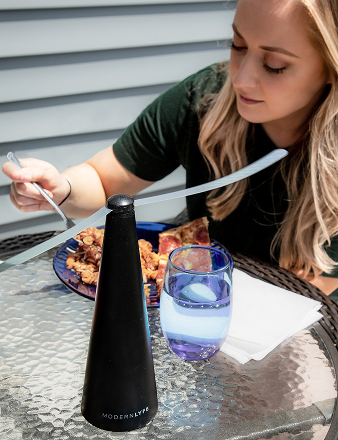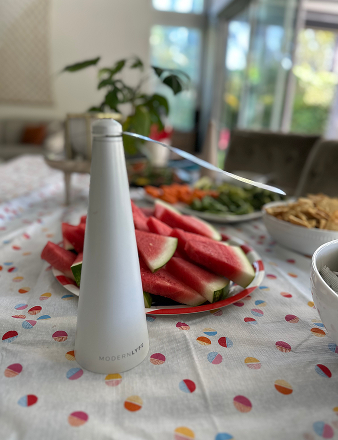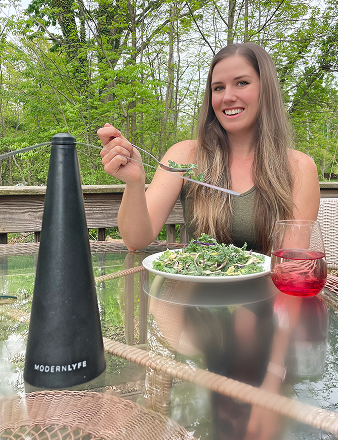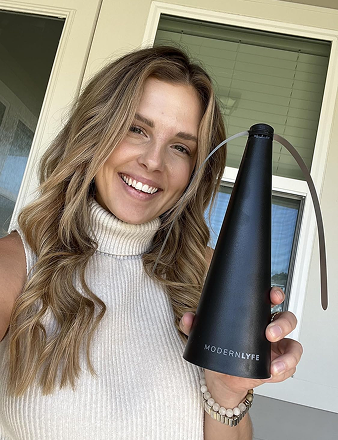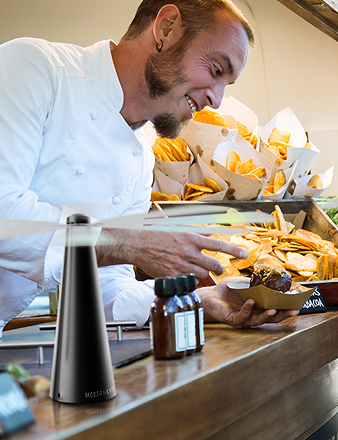Keeping flies off your food is simple: keep your space clean, use physical barriers, and deploy active deterrents like a fly fan when you need them. The most effective strategy combines all three, eliminating what attracts flies and physically stopping them from landing on your meal.
Your Guide to a Fly-Free Meal
Nothing ruins a great meal faster than a persistent fly. These pests are more than just annoying—they are known carriers of bacteria and can contaminate your food instantly. The first step to eliminating them is understanding why they show up. Flies are drawn to food waste, spills, and uncovered dishes, turning your dining table into a prime target.
By shifting your focus to prevention, you can create a space that flies actively avoid. A few key habits are all it takes to make your home and patio far less appealing to them.
Understanding the Threat
Flies aren't just trying to share your lunch; they are a direct health hazard. They often travel from garbage cans or pet waste straight to your plate, carrying dangerous pathogens with them.
This image highlights the link between flies, germs, and the health risks they bring to your table.

There is a clear line connecting flies, food waste, and foodborne illnesses, which is why keeping them away is so critical. It’s no surprise that the global market for fly traps is valued at around USD 303.68 million. This figure is growing as people and businesses get serious about controlling pathogens like Salmonella and E. coli to meet modern hygiene standards. You can read more about the fly control market's growth.
Key Takeaway: An effective fly control strategy isn’t about swatting; it’s about systematically removing their food sources and blocking them from your dining spaces.
Here’s a quick summary of the methods we'll cover.
Fly Control Methods at a Glance
This table breaks down the main strategies for fly control, showing you what they are and where they work best.
| Method Type | Examples | Best For |
|---|---|---|
| Environmental Control | Cleaning spills, sealing trash cans, managing compost | Everyday prevention in kitchens and patios |
| Physical Barriers | Food covers, screen doors, fly fans | Protecting meals during indoor or outdoor dining |
| Natural Repellents | Essential oils, repellent plants (basil, mint) | Creating a passive, chemical-free deterrent zone |
Each approach is effective, but combining them delivers the most reliable and lasting results.
Creating a No-Fly Zone Inside Your Home
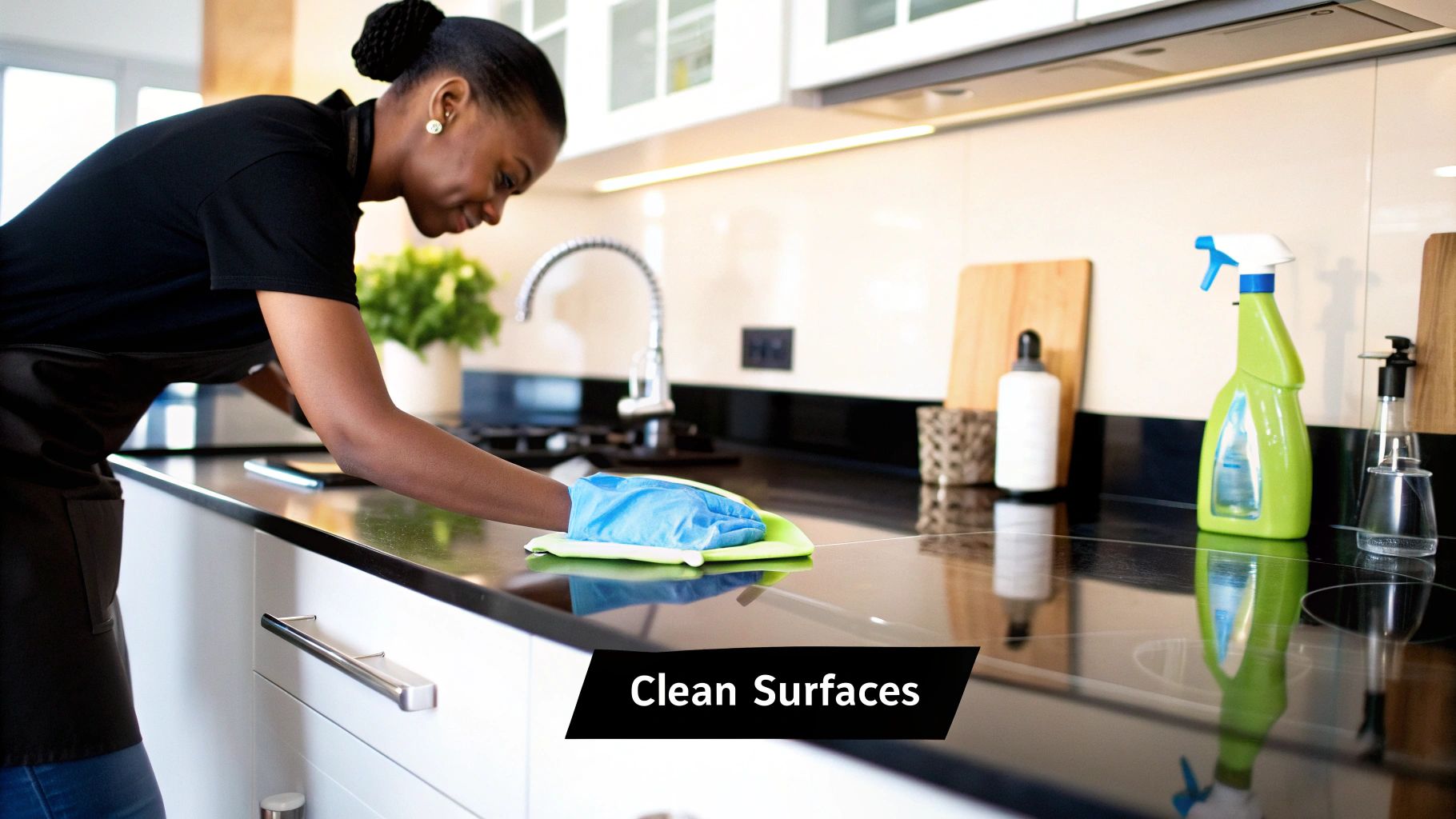
Your home is your sanctuary, not a fly-in diner. To win the war against flies indoors, you need to stop swatting them one by one and start preventing them from ever wanting to enter. This means making your space unappealing by cutting off their food supply at the source.
Flies are hardwired to follow the scent of decaying organic matter, making your kitchen their top destination. Crumbs under the toaster, a sticky spill on the counter, or a grimy drain are all open invitations.
Start with a Fly-Proofing Audit
The single most effective tactic for keeping flies away from food is to eliminate what attracts them. Professionals call this source control, and it’s all about ruthless cleanliness.
Give your home a quick, thorough audit. Focus on these common trouble spots:
- Garbage and Recycling: Ensure your bins are sealed. An open trash can is a five-star resort for flies to eat and breed.
- Kitchen Drains: Pour boiling water or a vinegar-baking soda mix down your drains weekly to clear out the gunk that attracts tiny drain flies.
- Hidden Spills: Check under appliances and in the back of your pantry for old spills or forgotten crumbs.
- Pet Food Areas: Wash pet food bowls immediately after your pets have eaten. Leftover pet food is a major attractant.
Industry experts agree: sanitation is the foundation of pest management. Commercial kitchens that prioritize hygiene over chemicals see a massive drop in fly populations. It’s a proven strategy you can easily implement at home.
Seal Entry Points and Enhance Defenses
Once your home is clean, lock it down. All the cleaning in the world won't matter if flies can walk in through a torn screen or a gap under the door. Inspect your window screens and door seals and patch any holes you find.
For an extra layer of defense right where it matters most—your dining table—active deterrents are a game-changer. Tools like Modern Lyfe’s fly fans create a simple, chemical-free barrier that stops flies from landing on your food.
By combining a clean environment with smart physical defenses, you build a powerful, multi-layered strategy that keeps your home and your meals protected.
Reclaiming Your Outdoor Dining Experience

Nothing beats an outdoor meal on a perfect day, but nothing ruins it faster than a swarm of flies. Before you retreat indoors, know that reclaiming your patio is entirely possible with a clever environmental strategy.
First, think like a fly. They seek strong smells and still air. Look around before you set the table. Garbage cans, the compost bin, or even a planter with stagnant water are all fly magnets. Set up your dining area as far from these hotspots as possible.
Creating airflow is another surprisingly effective tactic. Flies are terrible pilots in a breeze. A simple oscillating fan aimed across your table makes it incredibly difficult for them to land, encouraging them to find an easier target.
Setting Up Your Defenses
When preparing for an outdoor meal, think in layers of defense. A few well-placed deterrents can create a peaceful, buzz-free zone for you and your guests.
Before the food comes out, establish a barrier using natural, plant-based repellents. Flies hate certain smells that humans often find pleasant. Here are a few easy ideas:
- Potted Herbs: Place pots of basil, mint, lavender, or rosemary on and around the table. They look great and act as a natural deterrent.
- Essential Oil Diffusers: A small, battery-powered diffuser with peppermint or lemongrass oil can create a beautifully scented "no-fly zone."
- Citronella Candles: Famous for repelling mosquitoes, the smoke from citronella candles is also effective at discouraging flies.
Pests like fruit flies have such a massive impact on agriculture that they're subject to strict international regulations. This is a powerful reminder that the same principles of protecting global food systems apply right in our backyards. You can learn more about these global efforts to control fruit flies.
By combining smart placement with natural repellents and a bit of airflow, you can take back your outdoor space and finally enjoy your meals in peace.
How Modern Fly Fans Actually Work
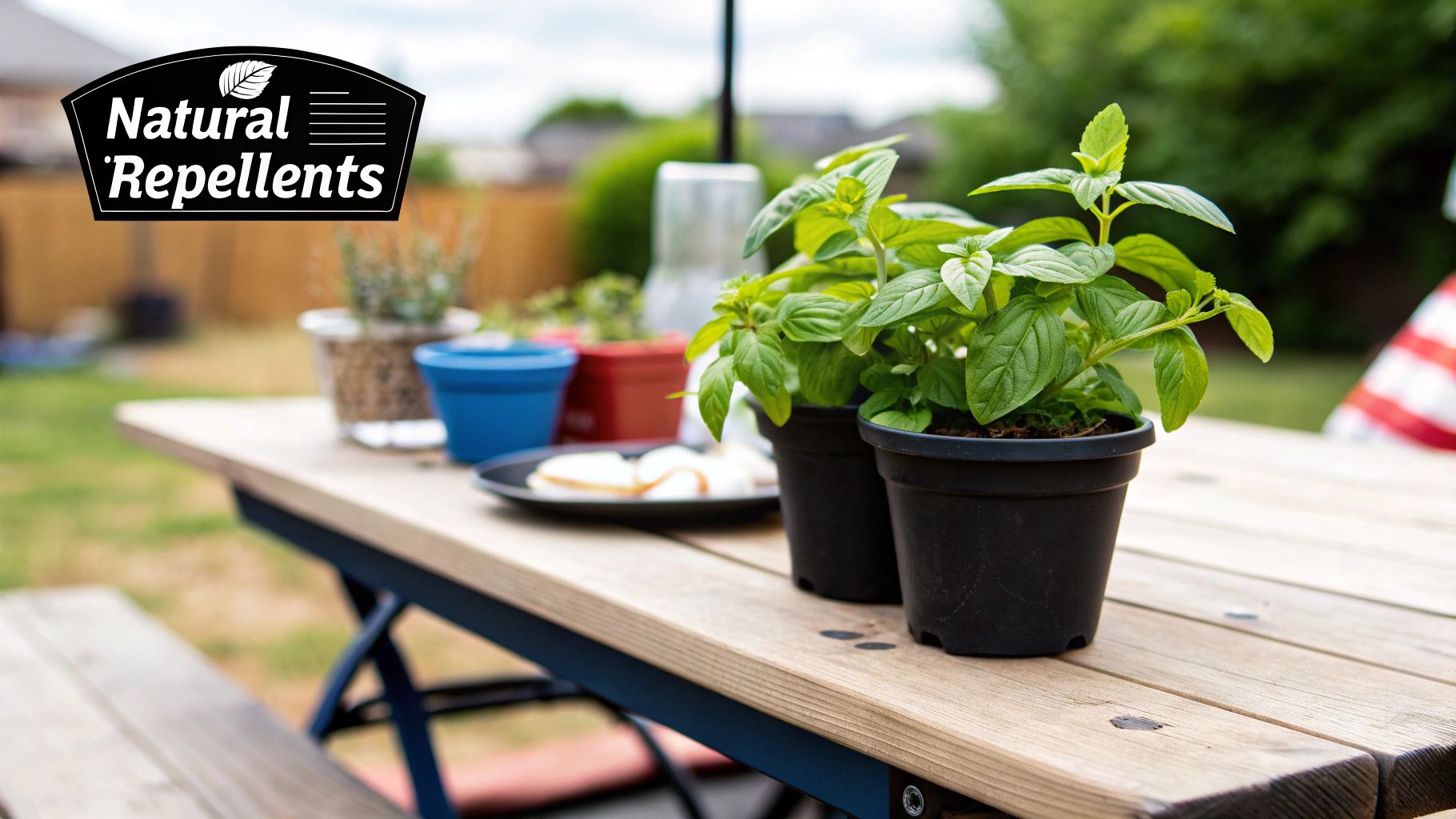
Let's look at one of the smartest tools for protecting a meal: the modern fly fan. These simple devices are engineered to exploit a fly's natural instincts. Forget smelly traps or chemical sprays—a fly fan creates a quiet, safe, and effective no-fly zone.
How does it work? The secret is a combination of air movement and visual disruption that overwhelms a fly’s senses.
First, the spinning blades create a gentle but persistent air current. While you might barely feel it, for a fly, it's like trying to land a tiny aircraft in a windstorm. As notoriously weak fliers, they will almost always avoid a breezy area for a still target.
It's All About Messing With Their Vision
The second part is even more clever: visual disruption. Flies have compound eyes, making them extremely sensitive to movement and light. The soft, holographic patterns on the fan blades are key. They reflect ambient light in a chaotic, shifting way that disorients flies.
To us, it’s a harmless shimmer. To a fly, the constant, unpredictable reflection signals danger. This visual chaos, combined with the disruptive airflow, creates a powerful barrier that doesn't harm them but simply tells them to go away.
It's a brilliant principle. Instead of killing flies after they arrive, the fan makes the area around your food so confusing and difficult to navigate that they give up and look elsewhere.
Placement is key for the best results. One fan in the center of a standard 4-6 person table is usually enough. For a larger buffet spread, use 2-3 fans to create an overlapping, protected perimeter.
You can explore different models and find the ultimate dining ally to banish these pests for good. It's a modern solution that ensures your meal remains the main event, not a free-for-all for flies.
DIY Repellents and Traps You Can Trust
https://www.youtube.com/embed/e3YTB6NQ_vw
If you prefer to solve problems with what you already have, you're in luck. Your kitchen pantry likely holds everything you need to tackle a fly problem. These DIY solutions are non-toxic, cheap, and surprisingly effective.
The concept is simple: either lure flies into a trap they can't escape or drive them away with scents they hate. It puts you in immediate control.
The most classic trick is the apple cider vinegar trap. It works like a charm, especially for fruit flies. Just pour an inch of apple cider vinegar into a jar and stir in a single drop of dish soap. The sweet, fermented scent of the vinegar draws them in, while the soap breaks the liquid's surface tension, causing them to sink.
Using Natural Scents to Keep Flies Away
To keep flies from landing on your table in the first place, use scents as your best defense. Flies despise certain smells that humans often find pleasant. A simple spray bottle filled with water and a few drops of essential oil can make your dining area a no-fly zone.
Here are the go-to oils for this purpose:
- Peppermint Oil: The sharp, minty aroma overwhelms a fly's sensitive sense of smell.
- Lavender Oil: While calming to us, it's a powerful natural insect repellent.
- Lemongrass Oil: This oil contains citronella, a well-known compound that flying pests can't stand.
These methods work because they disrupt a fly's basic instincts. You're either baiting them with something irresistible or repelling them with a scent they're wired to avoid. You're using their own biology against them.
For a truly bulletproof setup, combine these DIY tricks with a modern device. While your traps catch any stragglers, place a white fly fan to keep flies away from food in the middle of your table. It creates an active, scent-free barrier for total peace of mind.
Got Questions? We’ve Got Answers.
Even when you've done everything right, questions about keeping flies away from food can still pop up. Let's tackle some of the most common ones so you can feel confident in your fly-free setup.
It's a familiar story: one minute your patio is clear, the next it’s an airport for flies. What happened?
What Smells Will Actually Drive Flies Away?
Flies navigate the world by smell, which we can use against them. They dislike sharp, clean botanical scents, which act as a natural, invisible shield.
Here’s what works best:
- Essential Oils: The big four are peppermint, lavender, eucalyptus, and lemongrass. Add a few drops to a spray bottle with water for an easy mist on tables and doorways, or run a diffuser nearby for constant protection.
- Fresh Herbs: A pot of basil, rosemary, or mint on the table is more than just decoration—it actively repels flies. For a quick boost, rub a few leaves between your fingers to release their potent oils.
Why Did So Many Flies Suddenly Show Up?
A sudden swarm of flies almost always points to a new breeding ground nearby. They multiply incredibly fast, so your top priority is to find and eliminate the source.
Here's the key: Stop swatting flies and start looking for what's inviting them. A sudden fly problem is a symptom, and forgotten organic waste is almost always the cause.
Check these spots first:
- Garbage cans that are overflowing or not sealed properly.
- A sticky spill you missed under the fridge or in a cupboard.
- Food scraps stuck in a sink drain.
- Pet waste in the yard that needs to be cleaned up.
A thorough cleaning of these areas will usually solve the problem within a day or two.
Do Those Fake Wasp Nests Actually Work?
The idea behind fake wasp nests is clever—it plays on natural instinct. Wasps prey on flies, so in theory, a fly will spot the "nest" and steer clear to avoid being eaten.
While there isn't much hard science to back this up, many people swear by them. It's a cheap, harmless trick to try, but it shouldn't be your only line of defense. Think of it as one more tool in your toolbox, best used alongside good hygiene and physical deterrents like a fly fan.
Ready to enjoy a meal in peace, without the constant swatting? Modern Lyfe offers the perfect solution with our stylish and powerful fly fans. Protect your food, impress your guests, and take back your table. Shop the collection now at modernlyfe.com and make every meal a fly-free one.

